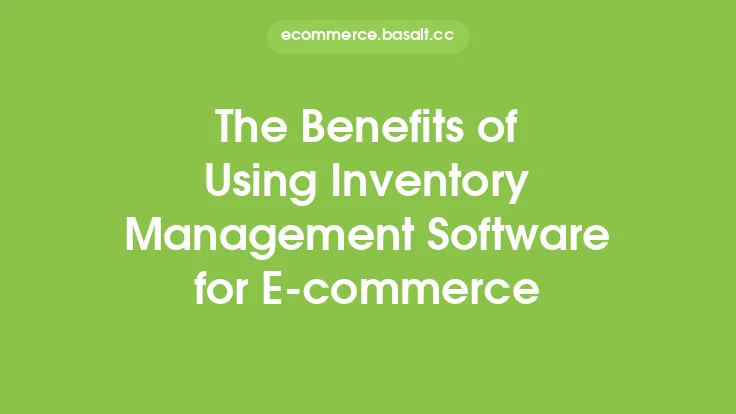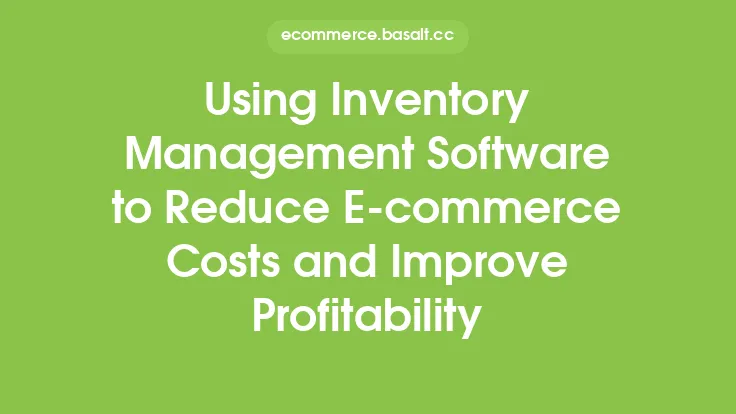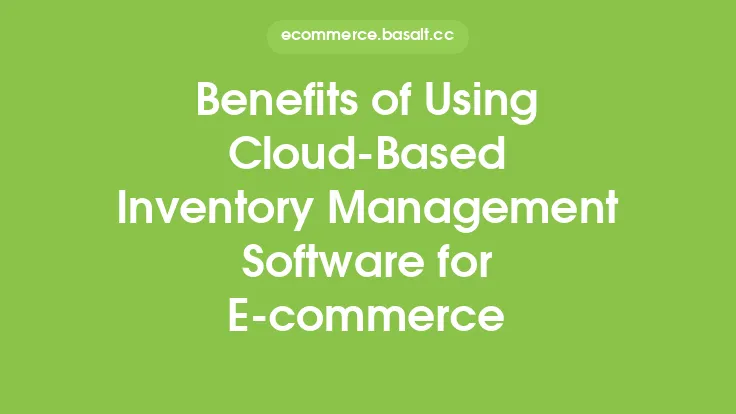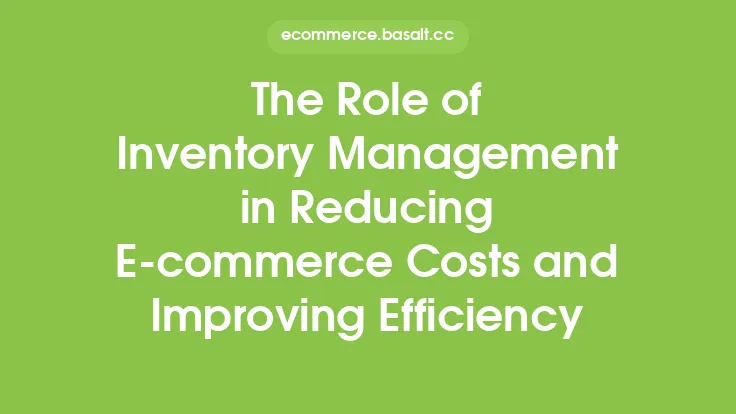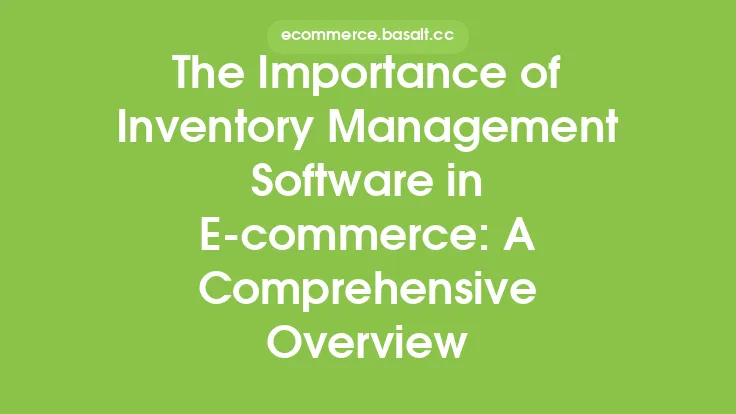Effective inventory management is crucial for the success of any e-commerce business. It involves tracking and managing the flow of goods, from procurement to delivery, to ensure that the right products are available at the right time and in the right quantities. Inventory management software plays a vital role in this process, providing businesses with the tools they need to optimize their inventory levels, reduce costs, and improve customer satisfaction. In this article, we will explore the tips and strategies for using inventory management software to optimize e-commerce inventory.
Understanding Inventory Management Software
Inventory management software is a type of application that helps businesses to track and manage their inventory levels, automate tasks, and make data-driven decisions. It provides a centralized platform for managing inventory across multiple channels, including online stores, warehouses, and physical retail locations. The software typically includes features such as inventory tracking, order management, reporting and analytics, and automation tools. By using inventory management software, businesses can streamline their inventory management processes, reduce errors, and improve efficiency.
Setting Up Inventory Management Software
To get the most out of inventory management software, it's essential to set it up correctly. This involves configuring the software to meet the specific needs of the business, including setting up inventory tracking, defining product categories, and establishing reorder points. It's also important to integrate the software with other systems, such as e-commerce platforms, accounting software, and shipping carriers. By setting up the software correctly, businesses can ensure that their inventory management processes are accurate, efficient, and scalable.
Using Inventory Management Software to Optimize Inventory Levels
One of the primary benefits of inventory management software is its ability to help businesses optimize their inventory levels. This involves using data and analytics to determine the optimal quantity of each product to stock, based on factors such as demand, lead time, and storage capacity. The software can also help businesses to identify slow-moving products, overstocked items, and stockouts, allowing them to make adjustments to their inventory levels accordingly. By optimizing inventory levels, businesses can reduce waste, minimize stockouts, and improve customer satisfaction.
Implementing Automated Inventory Management Processes
Inventory management software can also be used to automate many inventory management processes, such as tracking inventory levels, generating reports, and sending notifications. Automation can help businesses to reduce errors, save time, and improve efficiency. For example, the software can be set up to automatically generate purchase orders when inventory levels fall below a certain threshold, or to send notifications to customers when their orders are shipped. By automating inventory management processes, businesses can free up staff to focus on more strategic tasks, such as marketing and sales.
Analyzing Inventory Data to Inform Business Decisions
Inventory management software provides businesses with access to a wealth of data and analytics, which can be used to inform business decisions. For example, the software can provide insights into product demand, inventory turnover, and supply chain performance. By analyzing this data, businesses can identify trends and patterns, and make data-driven decisions to optimize their inventory management processes. For example, they may use the data to identify slow-moving products and adjust their pricing or marketing strategies accordingly. By using data and analytics to inform business decisions, businesses can improve their competitiveness, reduce costs, and improve customer satisfaction.
Integrating Inventory Management Software with Other Systems
Inventory management software can be integrated with other systems, such as e-commerce platforms, accounting software, and shipping carriers. This integration can help businesses to streamline their inventory management processes, reduce errors, and improve efficiency. For example, integrating the software with an e-commerce platform can allow businesses to automatically update inventory levels when orders are placed, or to generate shipping labels and tracking numbers. By integrating inventory management software with other systems, businesses can create a seamless and efficient inventory management process that spans multiple channels and systems.
Best Practices for Using Inventory Management Software
To get the most out of inventory management software, businesses should follow best practices, such as regularly updating inventory levels, monitoring inventory turnover, and analyzing data and analytics. They should also ensure that the software is properly configured and integrated with other systems, and that staff are trained to use the software effectively. By following these best practices, businesses can optimize their inventory management processes, reduce costs, and improve customer satisfaction. Additionally, they should regularly review and adjust their inventory management processes to ensure that they are aligned with the changing needs of the business.
Common Challenges and Solutions
Despite the many benefits of inventory management software, businesses may encounter challenges when implementing and using the software. Common challenges include data accuracy issues, integration problems, and user adoption. To overcome these challenges, businesses should ensure that the software is properly configured and integrated with other systems, and that staff are trained to use the software effectively. They should also regularly review and adjust their inventory management processes to ensure that they are aligned with the changing needs of the business. By addressing these challenges and following best practices, businesses can optimize their inventory management processes and achieve their goals.
Future of Inventory Management Software
The future of inventory management software is likely to be shaped by emerging trends and technologies, such as artificial intelligence, machine learning, and the Internet of Things. These technologies have the potential to revolutionize inventory management, enabling businesses to automate many processes, predict demand, and optimize their supply chains. As the e-commerce landscape continues to evolve, businesses will need to adapt and innovate to stay ahead of the competition. By investing in inventory management software and staying up-to-date with the latest trends and technologies, businesses can optimize their inventory management processes, reduce costs, and improve customer satisfaction.
